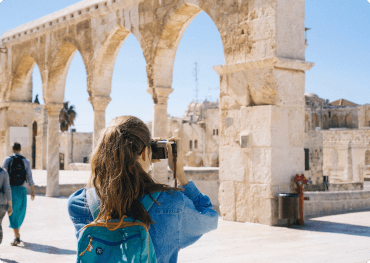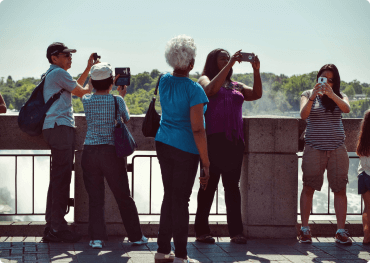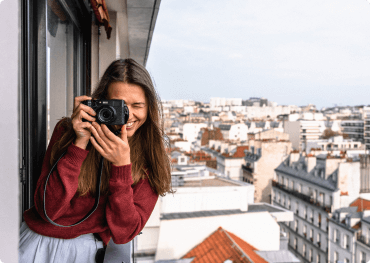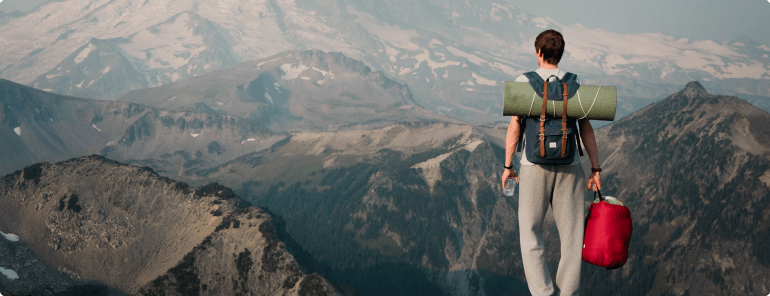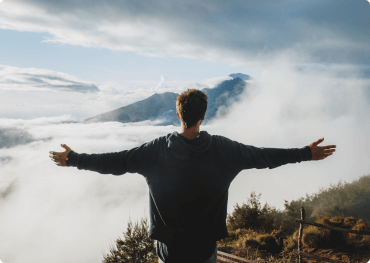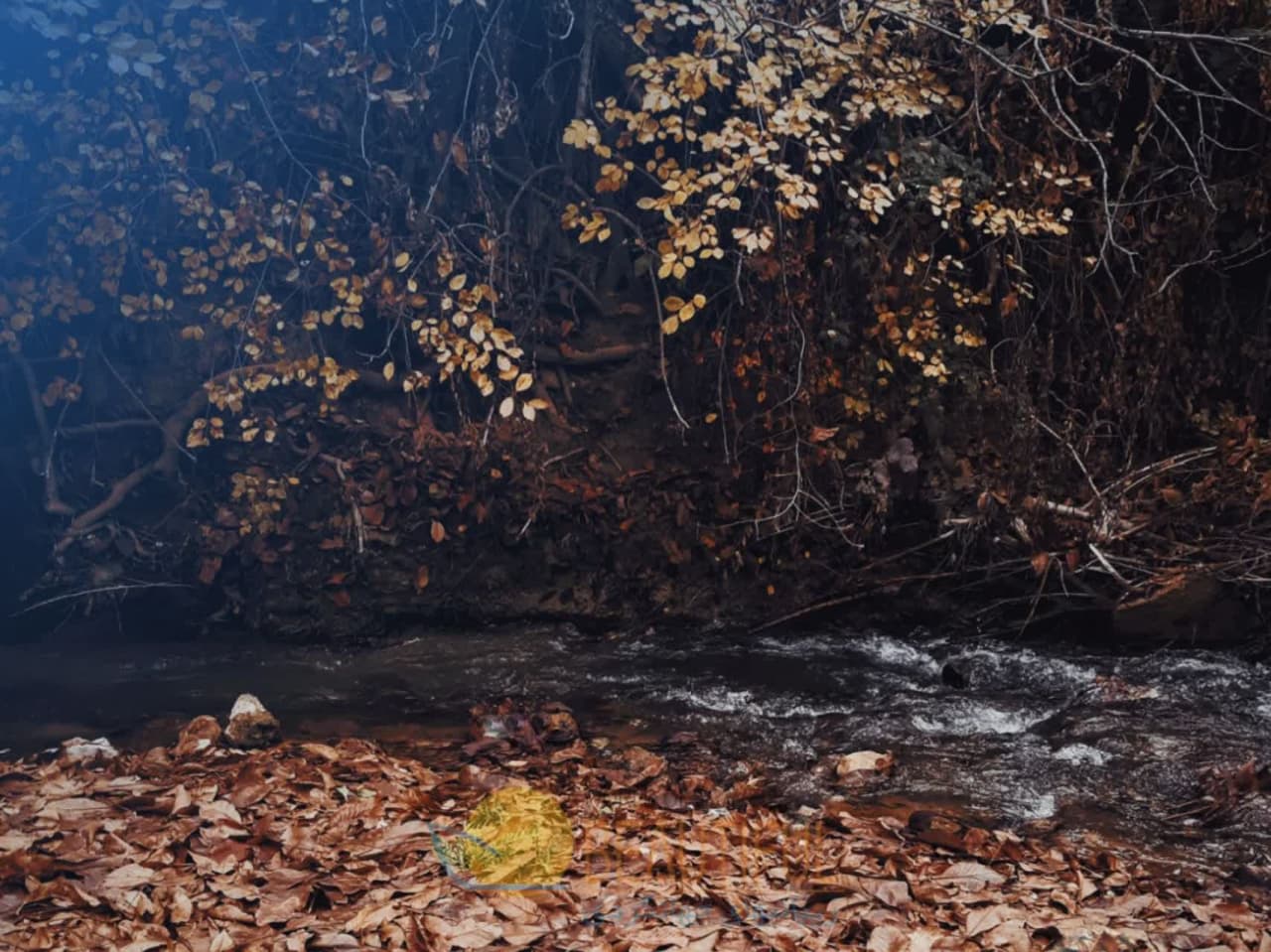
CL-507
Package Details
Day 1: Flight from your home country to Tehran capital of IRAN
We prepare ourselves for a fabulous trip to Great Persia.
Arrival to Tehran, after custom formality, meet and assist at airport and transfer to the Hotel.
O/N: Tehran
Day 2: Tehran- Kermanshah
After breakfast in hotel, we prepare to start for city sightseeing, visit Niyavaran Palace & Glestan Palace.
Lunch in a local restaurant during the visit. Evening transfer to Mehr Abad airport and flight to Kermanshah.
O/N: Kermanshah
The NiavaranComplex is a historical complex situated in Shemiran, Tehran (Greater Tehran), Iran. It consists of several buildings and monuments built in the Qajar and Pahlavi eras. The complex traces its origin to a garden in Niavaran region, which was used as a summer residence by Fath-Ali Shah of the Qajar Dynasty. A pavilion was built in the garden by the order of Naser ed Din Shah of the same dynasty, which was originally referred to as Niavaran House, and was later renamed Saheb Qaranie House. The pavilion of Ahmad Shah Qajarwas built in the late Qajar period.During the reign of the Pahlavi Dynasty, a modern built mansion named Niavaran House was built for the imperial family of Mohammad Reza Pahlavi. All of the peripheral buildings of the Saheb Qaranie House, with the exception of the Ahmad Shahi Pavilion, were demolished, and the buildings and structures of the present-day complex were built to the north of the Saheb Qaranie House. In the Pahlavi period, the Ahmad Shahi Pavilion served as an exhibition area for the presents from world eaders to the Iranian monarchs.
Golestan Palace is the former royal Qajar complex in Iran's capital city, Tehran.
The oldest of the historic monuments in Tehran, and of world heritage status, the Golestan Palace belongs to a group of royal buildings that were once enclosed within the mud-thatched walls of Tehran’s Historic Arg (citadel). It is a masterpiece of beautiful garden and buildings consist of collection of Iranian crafts and European presents from 18th and 19th century.
Golestan Palace Complex consists of 17 structures including palaces, museums, and halls. Almost all of this complex was built during the 200 years ruling of Qajarian kings. These palaces were used for many different occasions such as coronation and other important celebrations. It also consists of three main archives as the royal photographic archive collection 'Album khane', the royal library of manuscripts 'Ketabkhane Nosakhe khati' and the archive of documents 'Markaze asnad'.
Day 3: Kermanshah - Paveh
After breakfast, visit Taghe Bostan. After visit Taghe Bostan drive to Paveh (121 km).
O/N: Paveh
Kermanshah is the capital of Kermanshah Province, is located 525 kilometres (326 miles) from Tehran in the western part of Iran. According to the 2011 census, its population is 851,405. People mostly speak Southern Kurdish. Kermanshah has a moderate and mountainous climate Kermanshah is largest Kurdish speaking city in Iran.
Taq Bostan is a site with a series of large rock reliefs from the era of Sassanid Empire of Persia, the Iranian dynasty which ruled western Asia from 226 to 650 AD. This example of Sassanid art is located 5 km from the city center of Kermanshah in western Iran. It is located in the heart of the Zagros Mountains, where it has endured almost 1,700 years of wind and rain. Originally, several sources were visible next to and below the reliefs and arches, some of which are now covered. Sources next to the reliefs still feed a large basin in front of the rock. The site has been turned into an archaeological park and a series of late Sasanian and Islamic column capitals have been brought together (some found at Taq-i Bustan, others at Bisitun and Kermanshah).
The carvings, some of the finest and best-preserved examples of Persian sculpture under the Sassanids, include representations of the investitures of Ardashir II (379–383) and Shapur III (383–388). Like other Sassanid symbols, Taq-e Bostan and its relief patterns accentuate power, religious tendencies, glory, honor, the vastness of the court, game and fighting spirit, festivity, joy, and rejoicing.
Sassanid kings chose a beautiful setting for their rock reliefs along an historic Silk Road caravan route waypoint and campground. The reliefs are adjacent a sacred springs that empty into a large reflecting pool at the base of a mountain cliff.
Taq-e Bostan and its rock relief are one of the 30 surviving Sassanid relics of the Zagros Mountains. According to Arthur Pope, the founder of Iranian art and archeology Institute in the USA, "art was characteristic of the Iranian people and the gift which they endowed the world with."
The Taq-e Bostan complex comprise a rock relief standing on its own and several more reliefs associated with two rock cut arches. They illustrate the investiture ceremonies of Ardashir II, Shapur II, Shapur III and Khosrau II. They also depict the hunting scenes of Khosrau II.
Paveh is a small town in and the capital of Paveh County. Is one of the northern cities of Kermanshah and pave the city center near the border of Iran-Iraq (KRG) is located. DA is an area where it is located is a very good climate and Shahu is located near the mountains.
The city's residents and to speak Hawrami dialect. An old myth regarding the name of the city is that the Emperor Yazdgerd III sent his son named Pav to this area to renew his religious Zoroastrian faith. Both Persians and the local Kurdish inhabitants practiced Zoroastrianism during the Persian Empire's Sasanian era from which this myth is derived.
City tourism attractions:
The main tourist attractions in the region include the following: mountains soaring to a height of 3390 meters and fire at an altitude of 2389 meters Shahoo.
Spectacular and large caves, as Cave Castle (the largest water cave in Asia and the Shkyltryn caves in the world) Great River Sirvan and deep valleys along the river's water.
Big springs mineral water but "appointed to one of the Babylonian god of water," the water exit this beautiful place in the village is Hajij.
A beautiful promenade (Viehmeier) located on the slopes of Mount Shahu.
Day 4: Paveh – Uraman- Sanandaj
After breakfast, drive to Uraman (121 km) and visit beautiful landscapes and nature Uramanat. Evening drive to Sanandaj (160 km).
O/N: Sanandaj
Uraman or Hawraman urban beds in the Uraman Sarvabad city in Kurdistan province of Iran. This city in the region Hawraman located.
Uraman, from West to Iraq, the Kurdish north and the south with peers is limited and road length of 75 kilometers to the city of Marivan is connected.
The town in the valley east-west and in front of the mountain steep "bed" is located. Most of the homes in general as rigid stone staircase was created for China and that's why the "thousand village" is also called. The local people believe Uraman was once a great city and a center of special and why use it as a bed or in the center (government) Uraman area were mentioned. Shalyar old ceremony in the city is very famous.
Oraman -e- Takhat people to Avram (Hawrami or Avramanat) speak one of the dialects Gorani which is a subgroup of the northwestern Iranian dialects. Official languages and dialects written in the past Avram is legal tender. Flat Uraman people Muslim and Sunni religion, yet ancient rituals are still arising in the historical memory of the ancestors of the people of this region, lies and pass it ends.
Sanandaj is the capital of Kurdish culture and Kordestan province at Iran. Sanandaj is the twenty-third largest city in Iran. Until the 17th century it was only a small village, when the governor of the region, Suleyman Khan Ardalan, built (or renovated) a fortress there, known as "Sena Dezh", which gave the town its Persian name. Some sources date the origin of the fortress to the period of Abbasid rule (750–1258).
Day 5: Sanandaj- Bane
After breakfast, visit Sanandaj: Mansion Vkylalmlk & Bath, Minister Asef Mansion, Mosque Daralahsan (Jame).
Evening drive to Bane (250 km).
O/N: Bane
Mansion Vakil al-Mulk: Including the Old City of monuments and famous mansion to mansion lawyer, the streets were farmers. The mansion, freehold and personal family "lawyer" is always in the history of Kurdistan were in power. It consists of a main section in the middle and large series and other parts around it. This construction principle of the Zand period is concerned by the "Haj Mohammed Rashid Bey's lawyer" - the Prince Mozaffarkhan Zand was built in subsequent periods gradually been completed. First Overhauled in 1310 AH and by Mr. Amanullah Khan al-Mulk was a lawyer. Khan's lawyer Molk until it is safe to collection contains several buildings, courtyards and gardens had become current. The old building was demolished for various reasons before the revolution, but the effort is a renovated old style of its owner.
Bath: The building series, "Vakil al-Mulk" and attached to the poplar park, large private bathrooms in the series, the family was used. The bathrooms have spaces that can be seen all over the bathroom area appear to the bathroom at the same time building a lawyer mansion that dates back to the Zand period, is made. Lime Berry large-scale use of spaces on the walls and in hot and cold baths can be seen and used to decorate the bathroom roles include geometric shapes, plants and animals that have been used more as a peacock.
Minister Asef Mansion: Asif mansion that was called home in Sanandaj is known as a symbol of cultural identity people have and treasure anthropology of the Kurdish people from the most valuable cultural and historical monuments of Kurdistan is. Asef Mansion House today includes part of cultural projects, including spaces and display stands Mvz·hast, which is one of the oldest buildings in the city of Sanandaj in the Shapour Street, near Daralahsan mosque is located. The mansion by the "Asif Azam" (Mirza Ali Naqi Khan of Lashkar-e-Nevis) during the Safavid dynasty was established. Museum of Anthropology Kurdish areas" or "House", the Museum of Anthropology on the people in Iran. The first phase housing project that includes building Asif devoted to galleries and living Entrance, Bath, holders of urban life, schools, crocheting, jewelry, agriculture, business and technology, the documents and historic photos, room Khan, apparel, hunting stands, stands handicrafts , rural life stands the kitchen, the library and the documentation center. Asef Mansion collection of about four thousand square meter area and upscale and upscale residential homes as mortgage interest is in architecture, in 1375 to 1822 in the national index numbers have already been registered.
Mosque Daralahsan: Imam Khomeini Mosque in the north side of the street and in the old city of Sanandaj is located. The street where the mosque is located next to it was created in 1310 after solar. According to the inscriptions, the building of the mosque in 1227 AH by Amanullah Khan Ardalan the governor of Kurdistan was built. The building consists of two eastern and southern porch flowers on the porch categories eastern, central courtyard, 12 rooms around, colonnaded hall with 24 columns spirals. This could mosque mosque - school knew, because part of the mosque seminary students devoted to the chambers and the southern part of the main courtyard of the mosque. It has decorative tile seven colors of enamel work extremely prolific, elegant, Azarhhay marble, glazed brickwork and Mqly, rock pool and beautiful fountains and columns with the hanging rope.
Day 6: Bane- Zanjan
After breakfast, visit Bane city.Evening drive to Zanjan (330 km).
O/N: Znjan
Bane is a city of Bane in Kordestan province in the western border of Iran. Bane city center Bane city are 270 km northwest of Sanandaj at the beginning of the asphalt Bane - Sardasht is located. Bane with cities of Marivan, Sardasht, turpentine and Iraqi Kurdistan borders and its distance from the city of Bukan West Azarbaijan) is only 100 km. Baneh and some of the surrounding villages during the Iran-Iraq war planes Iraqi chemical weapons were. Bane people speaking Kurdish Sorani dialect is Slymanyhay.
Day 7: Zanjan-Qazvin
After breakfast, visit city: Zanjan market, a laundry, Jameh Mosque, Soltaniyeh. Evening drive to Qazvin (177 km)
O/N: Qazvin
Zanjan province is one of Iran's provinces in northwest Iran in the world. The capital city of Zanjan is. 8 is a city of Zanjan province and 1210 villages of these, 978 villages with inhabitants and the rest are uninhabited.
Zanjan market during the Agha Mohammad Khan Qajar began in 1213 at the time of Fath Ali Shah Qajar terminated and mosques, inns and public baths were added in 1324. Complex market as the market older for a straight line up and down to two divided east and west. Geographical extent and diversity of Zanjan market, the number of inns and Kavansrahay in the city of sub-orders, each dedicated to a specific activity and a name and indicate the dynamics of the series during earlier times and many mosques conditions prevailed. The market's longest indoor market spread from the West and East and therefore a down market and high market share and has been named.
Construction of Zanjan market in 1205 AD during the reign of Qajar Ghamhmd the beginning of the year 1213 AH coincides rule of Fath Ali Shah Qajar has ended. In later periods to the building of Zanjan market, including the construction of several Serra, mosques, and bath houses added.
Laundry or laundry historical building in the heart of the historic fabric of the city of Zanjan which is based on the old city wall, in a densely populated residential area was built. People in uniform and his clothes in the place Myshsthand. Such is not the same user for a public monument or is rare in the world. It has now been repaired and the Museum of Anthropology is used and people can visit it. The building in recent years due to the cold weather in winter Zanjani was created for women. Laundry, Zanjan monument at the site known as Baba Jamal Chvqvry (pit Babajmal) is located in the heart of the historic fabric of the city and access to laundry building from the street by street culture Saadi is also possible.
The purpose of this laundry, security and comfort women was in an indoor location.
The similarity between the users of these materials in any part of the country has not seen in this way, but in terms of architecture Abasgholi Khan Mosque and Citadel gate comparable to the building and public works day and night for its use Nmyshdhast received any money from citizens.Laundry building Zanjan province is now the most important museums in various costumes, accessories, tools and equipment used in women have been exposed.
Zanjan comprehensive school and mosque known as the Mosque of Sayed in the thirteenth century AH (in 1242) during the Qajar by a son of Fath Ali Shah Qajar in the name of Abdullah Mirza has disciples of Ayatollah Seyyed Mohammad priest Srdany was built to the center of teaching, prayer and the priest is the people's recourse Zanjani. House Hosseini Zanjani has since trustee of the mosque are responsible. The mosque is in the heart of the old city and is located in a good place in terms of access, from the Bakhtar housed, from the east and from the north alley of Sayyid Mosque Imam Khomeini Avenue and Green Square is related. The mosque named Masjid during the life of its founder, Seyyed Mosque, also called the Friday Mosque Masjid Sultan and laid. This historic collection that is among the largest and most beautiful mosques and religious schools in Zanjan, a valuable building of the mosque has four porches is made according to plan. Ayvanhay the four symmetrically placed on four sides of the mosque, more than anything in the courtyard of the mosque, glaring. Like other mosques in the courtyard of the mosque has four porches, square and rectangular shaped and 48 meters long and 36 meters wide.
In the middle of the courtyard of the mosque was a single pool that encircles it with the exception of the cells and Shbstanha, flowery gardens and plant cover that later disappeared absurd reasons. In Ayvanhay eastern and western 16 symmetrically rooms and 6 single rooms on the north side of seminary students were also made. In North and South Ayvanhay levels decorations such as building line, tiles and paintings Mqly herbal technique of polychrome tiles, Qajar art style and more with black and yellow colors to be seen. Domed prayer hall space width 7. 90 m and length of 8. 50 meters that is located immediately behind the south porch of the west and east and from north to south porch with Shbstanhay parties in the relationship. Over the yard, a huge dome on heavy Jrz • hay thickness of 20. 30 m based Grdydhast. Double-glazed dome of the mosque is covered with turquoise tiles, the domes that without earrings and Trnbh on four thick boat Jrz • hay. Sura Aldhr third line painted on the dome and added to its beauty. In the top of the dome, there are signs of bronze in the shape of balls.Hosseini library is located on the upper floor of the mosque.
Dome of Soltaniyeh: The central magnet of Soltaniyeh's several ruins is the Mausoleum of Il-khan Öljeitü also known as Muhammad Khodabandeh, traditionally known as the Dome of Soltaniyeh in Soltaniyeh city, Zanjan Province. Olcaytu Xudabəndə türbəsinin kəsiyi-001.jpg
The structure, erected from 1302 to 1312 AD, has the oldest double-shell dome in Iran. This erroneous view of the construction was made by Dieulafoy but is totally disputed by Andre Godard. In Godard's view it is a normal, if spectacularly large dome, with a thin skin on top for the faience and is in no way a double dome. Its importance in the Muslim world may be compared to that of Brunelleschi's cupola for Christian architecture. It is one of the largest brick domes in the world, just at the theoretical engineering limit for a brick dome and the third largest dome in the world after the domes of Florence Cathedral and Hagia Sophia. The Dome of Soltaniyeh paved the way for more daring Iranian-style cupola constructions in the Muslim world, such as the Mausoleum of Khoja Ahmed Yasavi and the Taj Mahal. Much of its exterior decoration has been lost, but the interior retains superb mosaics, faience, and murals. People have described the architecture of the building as “anticipating the Taj Mahal.”
The estimated 200 ton dome stands 49 meters (161 ft.) tall from its base, and is currently undergoing extensive renovation.
Day 8: Qazvin
After breakfast, visit city: Museum of Anthropology, Tomb H. Exchequer, Mosque of Qazvin, Qazvin market.
O/N: Evening Transfer to International airport (Imam Khomeini)
Museum of Anthropology: The monument in 1379 by the Cultural Heritage and Tourism Qazvin Province purchases and by investing Qazvin Municipality and the renovation and improvement of management was refurbished and now as the Museum of Anthropology in 3 parts ethnicities, customs and jobs are interested Bazdbd place.
Tomb H. Exchequer: Tomb H. Exchequer of the patriarch and Qazvin, Taleghani Street, Street Malekabad former alley located Exchequer and the effect on 20 Persian date Bahman 1318 with registration number 332 as one of the national monuments has been registered. H. Exchequer small brick tomb tower is planned lunar eighth century square tower capped by four elephants, 8-sided and covered with conical dome.
280 square meter courtyard is only 40 square meters of this amount is allocated to infrastructure. Entrance to the tomb of the Prophet Mohammad Sadiq including La Illaha Alaallh ol Haq and Al-Bari al-Amin al- decorated, the building has a simple turquoise tiled domes and pillars around the inscription is below Sura pushed further down the line prescriptions bed and double doors at the entrance the tomb also sloppy goal is inlaid.
A pair of inlaid tomb, a leaf is gone and the door has been transferred to the National Museum of Iran and its location in the new building was laid in the tomb.
Exterior brick building in accordance with the provisions of the patriarch M's style, conical dome earlier that in later period’s brick and tile Mqrnssazy circle around the bottom of the dome repaired.
Infrastructure and the beautiful dome of the magnificent monuments of the Mughal era, with an inscription in hieroglyphics how life is azure tiles H. Exchequer, ancestors and his writings have been summarized.
The tombs in the neighborhood of the Shrine of Ali and Amna Khatoon cotton thread Square East is located in Qazvin, which is also called long-Dome.
Many people in the fourteenth century solar neighborhood, enclosure wall around the monument that had become ruins, were conducted at the tomb of a brief but historic restoration in 1319 this tomb was essential.
The entrance on the southwest side of the mausoleum is across the courtyard and shape of the tiles to square up above the 8-sided and the rest of the jugular subrounded, the dome of cone-shaped and all the brick distances be jointing is.
North corner, two bedrooms and two underground mausoleum to guard the tomb was built with a dock and water. The tomb in the style of Azerbaijani architecture is built.
Mosque of Qazvin: Atiq Mosque of Qazvin or Mosque or the Great Mosque of the largest mosques in Iran and most Vkhn Msjdjam Iran from the time of Sassanid fire temple was built on the first Ast.bnay (temple was part of the southern portico). It has four porches and the style Msjdbh the city of Qazvin. This year 192 AD, built at the command of Aaron Alrshydvbh. The Mongol invasions of Qazvin Vazanjakh the Msjdshhrbvdh, part of it (Vazjmlh south porch) was destroyed but has been restored in subsequent periods.
Multi-era architecture in the oldest part of the building is observed and it belongs to the second century of Islam. Ivan course Safavi renovated but the eastern porch during the Qajar been refurbished.
Construction Mqsvrh Khomartash on the south side of the mosque on the orders of the Emir Ibn Abdullah Emadi hooded Tash, Minister Sultan Malek Shah Seljuk was the year 500 AH. As well as the inscriptions on the fifth row of flowering Kufic script, manuscripts and one-third can be seen at this location.
In May 1392 Cultural Heritage, Handicrafts and Tourism Organization of Qazvin province west of the restoration of the minaret of the mosque Museum of stone and ceramics in the yard opened west of the historic mosque. The museum of pottery, stone engravings, sash, tile and various gypsum involved in the art exhibit in the world.
Qazvin market: Qazvin collection with interesting architecture and its old market, one of the landmarks of the city of Qazvin Ast.sabqh market in Qazvin to one thousand years, and over time the market reaches up to the Safavid grows and in the course by selecting Qazvin as the capital of Iran and after in the Qajar era with the construction of significant projects such as the home of Saad al- market due to the proximity of the city of Qazvin in the axis connecting the capital of the west and northern Iran on those given great value. But the current market collection of Safavid and attributed much of its current buildings during the Qajar made.
During the Safavid expanded market environment and the market have been related to a specific trade. In the course of each of these markets, mosques, baths, inns, arcade and Qysryhhay that of these, arcade and Caesarea Trade Center site were craftsmen. Qazvin housed Taqha brick immense height, Yi sections of Qazvin market, which has four gates and is still extant works. North Door Timcheh soldier, southern door Timcheh covered, Eastern door to the home minister and the Western door to a small Chahar connected.
Qazvin's most important market areas are: un-Nabi (mosque) , Saad al-Saray , the home secretary , the home of Haj Reza Razavi House (the home of the King), covered passageways including indoor and outdoor swimming Mehdi Darvish, Haj Mohammad Taqi and orders Caesarea.
Day 9: Departure
Back home after a memorable trip
Details
Pellentesque accumsan magna in augue sagittis, non fringilla eros molestie. Sed feugiat mi nec ex vehicula, nec vestibulum orci semper. Class aptent taciti sociosqu ad litora torquent per conubia nostra, per inceptos himenaeos. Donec tristique commodo fringilla. Duis aliquet varius mauris eget rutrum. Nullam sit amet justo consequat, bibendum orci in, convallis enim. Proin convallis neque viverra finibus cursus. Mauris lacinia lacinia erat in finibus.
Pellentesque accumsan magna in augue sagittis, non fringilla eros molestie. Sed feugiat mi nec ex vehicula, nec vestibulum orci semper. Class aptent taciti sociosqu ad litora torquent per conubia nostra, per inceptos himenaeos. Donec tristique commodo fringilla.
- Specilaized Bilingual Guide
- Private Transport
- Entrance Fees
- Box Lunch,Water,Dinner and Snacks
Pellentesque accumsan magna in augue sagittis, non fringilla eros molestie. Sed feugiat mi nec ex vehicula, nec vestibulum orci semper. Class aptent taciti sociosqu ad litora torquent per conubia nostra, per inceptos himenaeos. Donec tristique commodo fringilla.
- Specilaized Bilingual Guide
- Private Transport
- Entrance Fees
- Box Lunch,Water,Dinner and Snacks
Pellentesque accumsan magna in augue sagittis, non fringilla eros molestie. Sed feugiat mi nec ex vehicula, nec vestibulum orci semper. Class aptent taciti sociosqu ad litora torquent per conubia nostra, per inceptos himenaeos. Donec tristique commodo fringilla.
- Specilaized Bilingual Guide
- Private Transport
- Entrance Fees
- Box Lunch,Water,Dinner and Snacks
Pellentesque accumsan magna in augue sagittis, non fringilla eros molestie. Sed feugiat mi nec ex vehicula, nec vestibulum orci semper. Class aptent taciti sociosqu ad litora torquent per conubia nostra, per inceptos himenaeos. Donec tristique commodo fringilla.
- Specilaized Bilingual Guide
- Private Transport
- Entrance Fees
- Box Lunch,Water,Dinner and Snacks
Pellentesque accumsan magna in augue sagittis, non fringilla eros molestie. Sed feugiat mi nec ex vehicula, nec vestibulum orci semper. Class aptent taciti sociosqu ad litora torquent per conubia nostra, per inceptos himenaeos. Donec tristique commodo fringilla.
- Specilaized Bilingual Guide
- Private Transport
- Entrance Fees
- Box Lunch,Water,Dinner and Snacks







